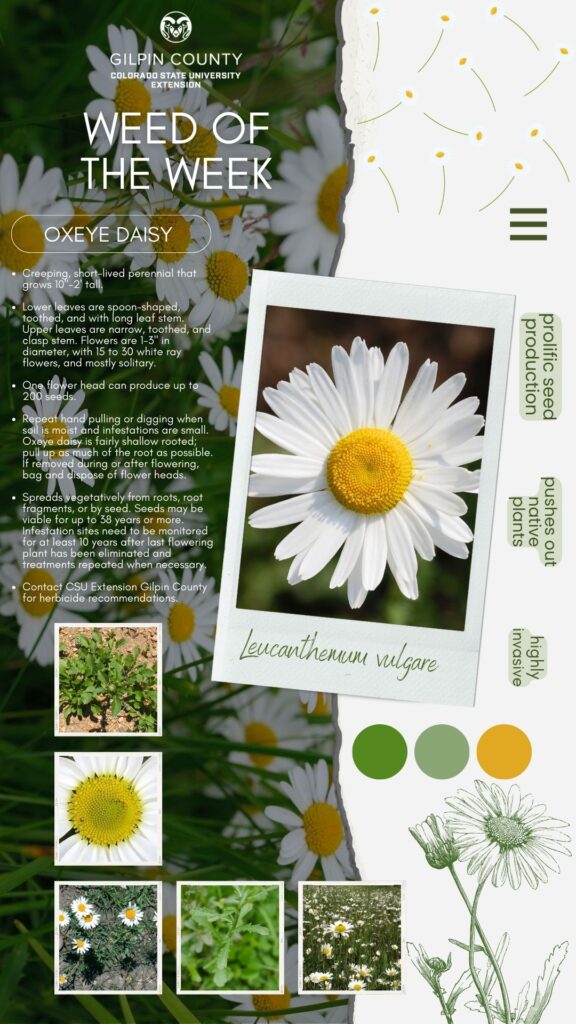
Oxeye daisy (Chrysanthemum leucanthemum/Leucanthemum vulgare)
State law: If you live in a “containment” area, it does NOT mean you can let the daisy grow freely on your property. Containment means that you need to suppress the weed (reduce its vigor and seed production) and keep it from spreading any further. If at all possible, it should slowly be eradicated, but work must be done every year nonetheless.
- Native daisies and asters are good alternatives.

Shasta daisy (left) vs. Oxeye daisy (right)


